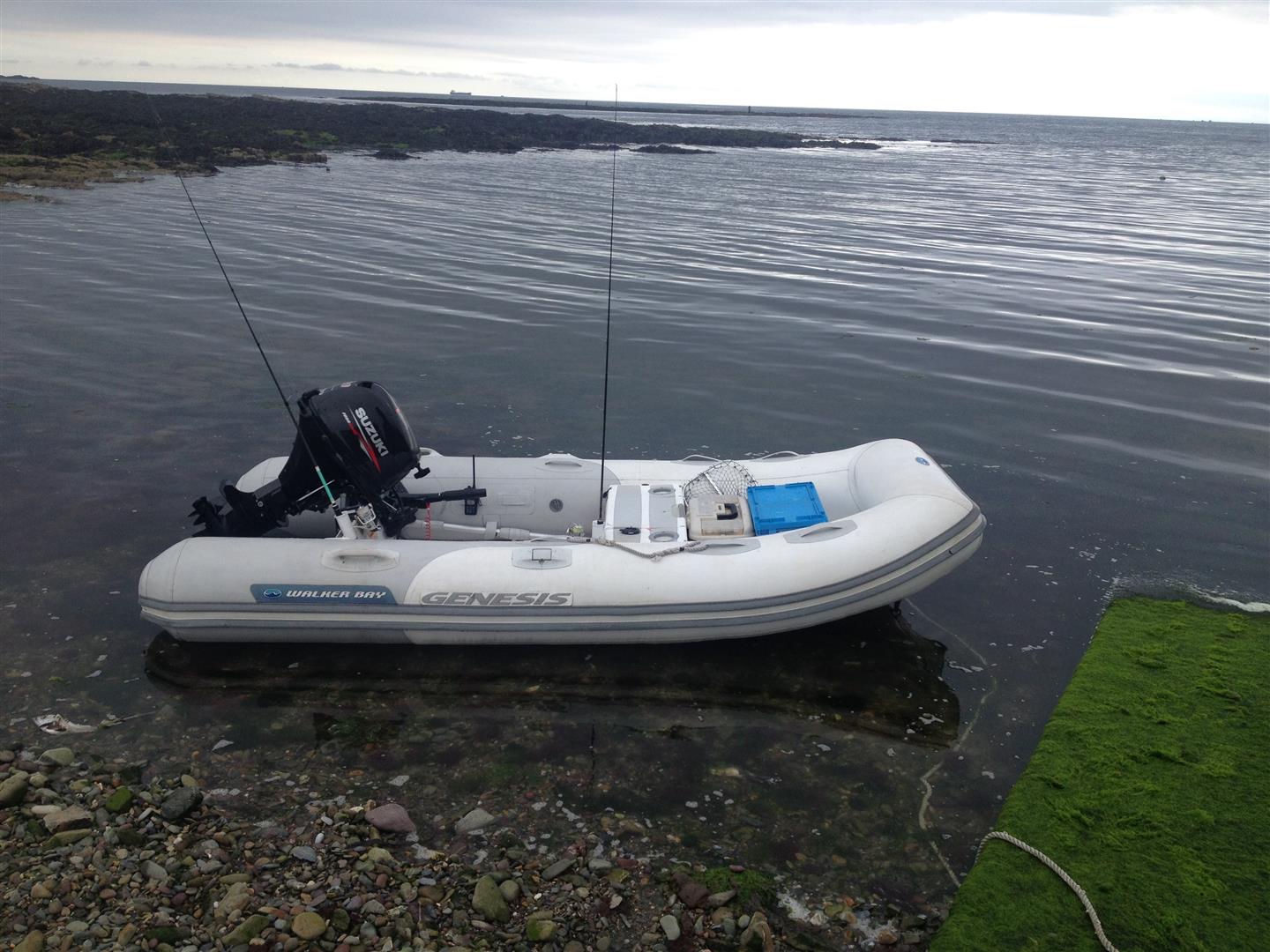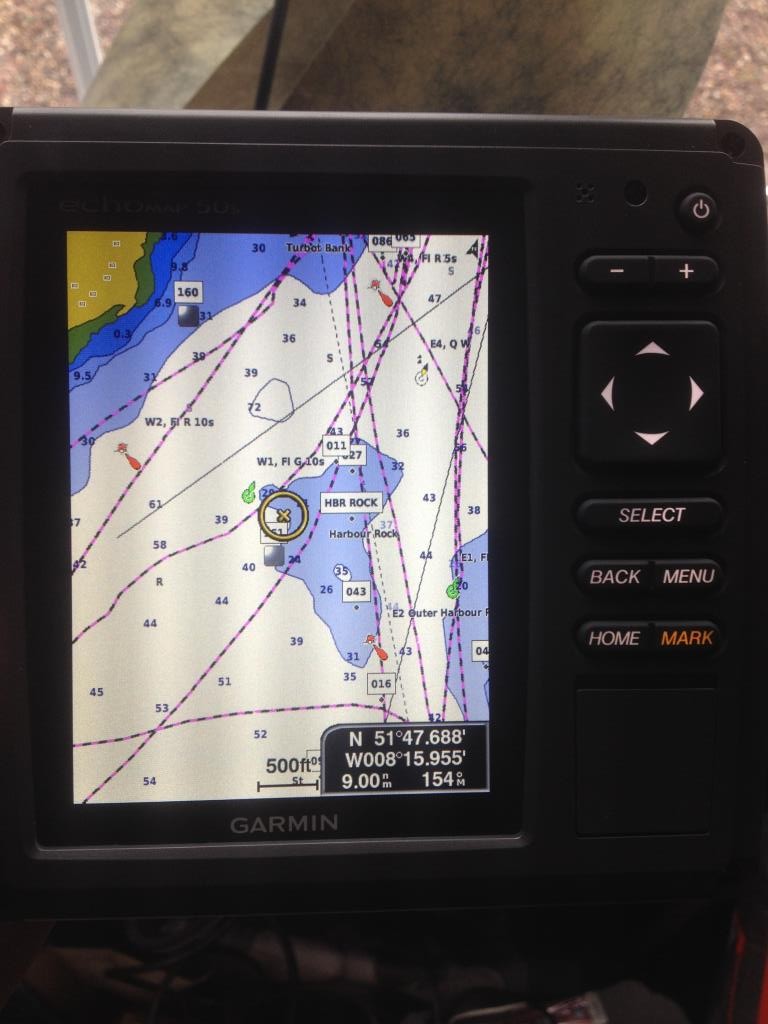* Bass Attag!

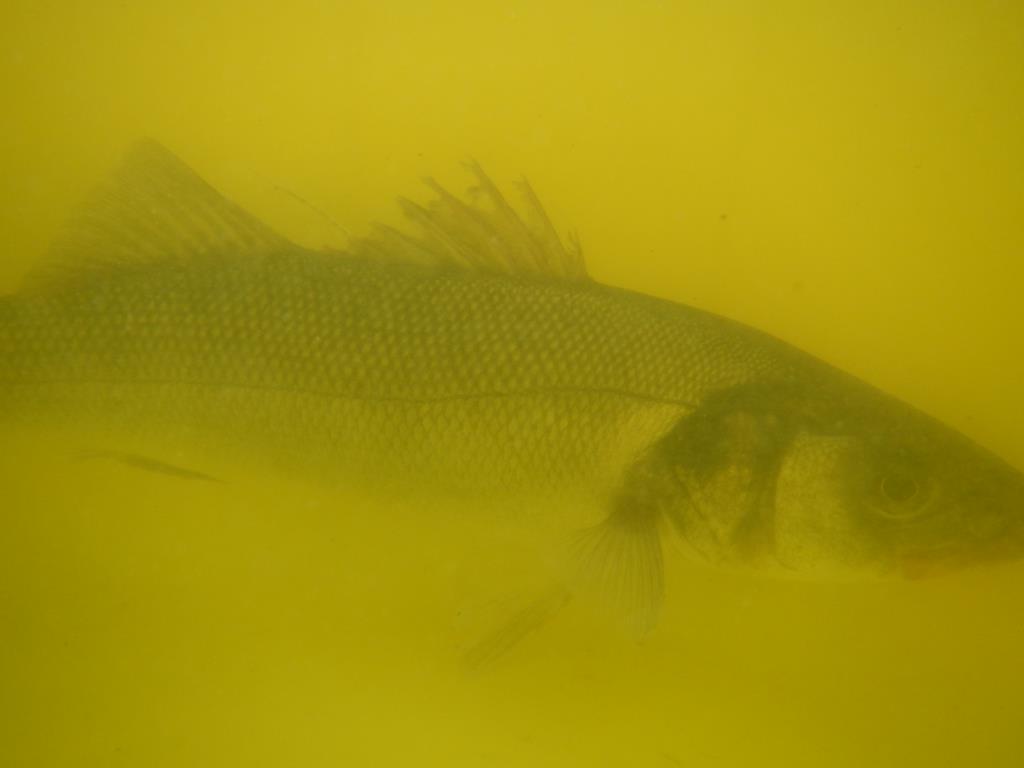 (This article was publised in Irish Angler Magazine in 2013) It felt like a morning during the Cork Small Boats Festival! That unmistakeable feeling in the stomach that says “pressure to perform” as I stood on the pontoon at the Marlog Marina in East Ferry, in east Cork. I could see that I was not alone. The shuffling, the nervous banter from scientists and anglers, the quiet reflection, the buzz of anticipation and most of all the desire for success flagged this as not just a normal day chasing bass. This day is the culmination of many months, even years, of discussion and planning. This day is an historic one in the annals of bass angling in Ireland. Yes bass have been studied before, yes bass have been tagged before, but this is the first time, certainly in Ireland, to my knowledge in Europe and possibly the World that bass would be tagged in such a way that their movements can be monitored in “real time”. The discussion and the planning are now over and now it is down to the anglers to do the business – a study without fish is a study waiting to happen!
(This article was publised in Irish Angler Magazine in 2013) It felt like a morning during the Cork Small Boats Festival! That unmistakeable feeling in the stomach that says “pressure to perform” as I stood on the pontoon at the Marlog Marina in East Ferry, in east Cork. I could see that I was not alone. The shuffling, the nervous banter from scientists and anglers, the quiet reflection, the buzz of anticipation and most of all the desire for success flagged this as not just a normal day chasing bass. This day is the culmination of many months, even years, of discussion and planning. This day is an historic one in the annals of bass angling in Ireland. Yes bass have been studied before, yes bass have been tagged before, but this is the first time, certainly in Ireland, to my knowledge in Europe and possibly the World that bass would be tagged in such a way that their movements can be monitored in “real time”. The discussion and the planning are now over and now it is down to the anglers to do the business – a study without fish is a study waiting to happen! 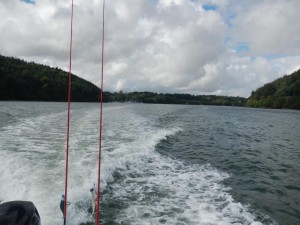
So what is it all about?
Over the years bass anglers get a little squirmy when there is mention of studies, especially studies which attempt to assess stock levels. It is an innate reaction by anglers to the attempts by the commercial fishing sector to have the laws that protect our bass overturned. Correctly anglers fear such an opening of the bass fishery.
Having once almost wiped out bass from our coastline anglers are fearful that the commercial sector now have the means to make short work of our fragile bass stocks if they were left to fish commercially for bass. The general conception is that if the stock is unknown then the powers that be will be unable to open the fishery. This is a noble thought but a bit of a misconception as such rational decision making can often be overlooked, forgotten or simply ignored when it comes to politically driven decision making. The fact remains that after over twenty years of bass “protection” bass are still not in a strong position and are nowhere near the stock levels of the pre-protection era. Last year’s bass season was not good. I think we put it down to bad weather. Can we blame the weather again this year?
Have you ever, while perched on a rock or beach or while drifting calmly in your boat thought about or rationalised as to why you were not catching fish? Of course you have! The wind is from the wrong direction, the water is too clear, the water is too murky. There is too little swell. There is too much swell. You are fishing the wrong stage of tide. You are fishing the wrong strength of tide. The bass have moved somewhere else. The bass have been netted locally. The bass have been netted by pair trawlers offshore. We are always asking questions that we do not really know the answers to. This is before we begin to question our abilities and the tackle we are using. Bass anglers are an introspective bunch!
For the first time some of these questions can be answered by a study that is driven by the need to conserve and nurture our bass stocks. This is a groundbreaking study. The study is being funded by the Electricity Supply Board (ESB). The study is being carried out by the Costal Marine Research Centre (CMRC). There are other partners too: the Science Foundation on the funding front and Inland Fisheries Ireland in the operations side of things and of course the project is helped by a team of local bass anglers. The fish must be caught to be studied! The principle of the study is simple- set up listening posts around the harbour and monitor the movements of tagged fish. These listening posts are expensive hydrophones that will receive and record data. The butter to the bread in this case is tagged bass. Bass will be fitted with internal tags or more correctly transmitters. These tags are sophisticated transmitters that broadcast at specific frequencies. Once the fish are released back to the wild the tags will “ping” at predetermined intervals, these pings will be picked up by local hydrophones and therefore with triangulation and other wizardry the movement of the fish can be tracked and therefore an attempt can be made to definitively answer many questions for the first time.
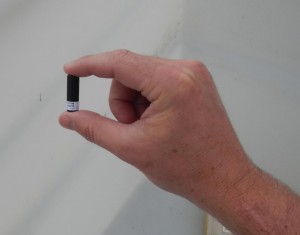
So what questions would an angler like to have answered? I would love to see the patterns of bass movement with the tide in given areas. We assume that bass move around and feed at different places at different stages of tide. Is this so, or do bass just remain in an area and “switch on” at feeding time? We all reckon that most bass leave our shoreline and harbours in the winter time. Do they leave together? How many leave? Is it based on size? Based on age? Do they leave at a predetermined time, a predetermined temperature? Thankfully the question of where our bass go at winter is not going to be addressed by this study. That sort of information might just be too sensitive in the overall scheme of things and even possibly too dangerous in the wrong hands. The tags fitted to the bass will have over a year of life so it is possible that the transmitters will be working when bass that have left the harbour return again next year.
Are the same bass returning to the same areas year after year? I have heard many say that they do however this idea seems to be based on romantic notions rather than scientific fact. I think I would like to be in the control room when data begins to flow in April next year – that will be a special moment. There are massive amounts of questions that will be answered. How far does an individual fish swim in the average day? We have notions that they can travel large distances in a tide but really these are only notions. Do the fish swim together in packs? Bass are a shoaling fish normally. How many bass will be recaptured in the relatively small area that is East Ferry?
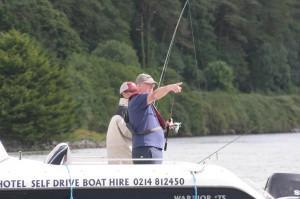
Is there a role in conservation for this project? I think so. What if all the tagged fish disappear over a short space of time? Where have they gone? I think any reasonable angler would release a tagged fish if he happened to catch one (the bass will also be tagged externally with a streamer tag). If the fish or some of the fish disappear it may be an indication of levels of criminal activity. Maybe the hydrophones will record boat movements in areas at strange times and allow IFI to focus their prevention measures. The possibilities are endless. I am sure that you are thinking of questions that can be answered yourself! The team from the CMRC will be only too happy to provide answers if you contact them through their Facebook page. Here
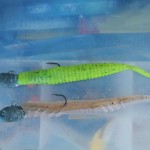
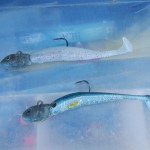
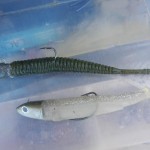
Preparations & Planning
After a planning meeting it was decided to begin the first phase of the project in the localised area of East Ferry. It is no secret that there are bass in East Ferry. People are well used to see pictures featuring the iconic East Ferry Chapel in pictures. The thing is with East Ferry is that it is not all bass anglers that fish the area successfully as the channel can be somewhat of a tackle graveyard. There is little point in blitzing an area with too many boats and too many anglers. It tends to put the fishing off. So we decided to select some anglers from our team that are the best at their game fishing vertically, and anglers that are used to fishing in the tackle graveyard that is East Ferry.
We would have just two sessions in which to tag a target of between ten and fifteen bass. One time this number would be classed as an easy target although in recent years this total would seem like a lofty ambition. We would have to see what conditions are like on the day. But as with any boat angling trip preparation is the key. I usually fish fairly intensively and these trips were going to be no exception. I will have two rods rigged and ready for action at all times. If I get snagged and lose a lure I can immediately switch to the backup rod and do not lose fishing time. There is will be no experimentation on the day. I will use the most reliable and consistent lures in my box. Lately that leaves me with plenty choice – Black Minnow, I-Shad, Nitro Spring, Absolut Worm, D’Tails, BKDs and Yokozuna Sentails are all prepared and pre rigged so I can maximise my fishing time. This is vertical fishing so there will be no weightless lures and no casting. This is all about keeping contact with the bottom with as light a lure as possible. Experience tells me that twenty odd grams will be the order of the day until the tide really begins to push through the channel. We may have to increase slightly in order to keep us fishing. Hopefully we might have our target for the day achieved before that time.
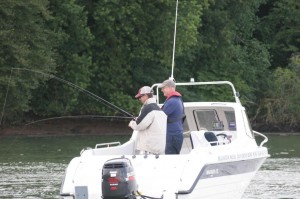
The Day
As the tide began to flood we were waiting. We split up the two boats in order to cover as many likely fish holding areas as possible. Kevin Murphy and myself are aboard a Bellavista Hotel boat. Kevin is relishing the task at hand. Kevin’s business is largely a tourism business. Angling makes up an important part of that business. “This year alone I have invested heavily in the Angling Product. We have spent close to one hundred thousand Euros providing a new boat and we now have four Hobie Pro Angler 12 Kayaks. These are state of the art angling machines. I think that this study is important to Irish Angling and therefore I am delighted to be a part of it” On the other boat are Mike Hennessy of Inland Fisheries Ireland and Pat O’Shea of the Commodore Hotel in Cobh. Mike has interrupted his holidays to fish. Pat is one of the finest bass anglers in the country. Again his business relies heavily on tourism. “This study can help conserve our bass. We are the envy of Europe because of our bass protection. If we conserve our stocks the anglers will come from all round Europe to spend their money in Ireland. Bass are a shared resource for all the people.” All the anglers are prepared for the fishing and as soon as the tide begins to flood we set our boats up on our drifts and we begin fishing.

These guys are licenced to tag!
Within a few minutes Kevin Murphy connects with a bass. It is a small fish but the scientists are anxious to tag fish of various sizes. Kevin brings the fish to the side of the boat as quickly as possible. We have to bully the fish today. The fish has to go through an extensive process back on land so we minimise the fight in order to deliver a healthy and strong fish to the tagging station. Once we deliver the fish to shore the shore team begin their work. Firstly the fish is placed into an aerated recovery tank. At this stage the scientists can determine if the fish is strong enough for the procedure. Our fish is fin perfect and healthy, a perfect candidate. The fish is then moved to a tank containing an anaesthetic solution. Within minutes of swimming in the solution the fish floats belly up in the tank – out for the count! At this stage the subject is transferred to an operating table. On the table the vital statistics are recorded and the transmitter is inserted into the stomach cavity of the fish through a surgical incision. A streamer tag is also fitted in order to identify the fish as a tagged specimen. The fish is sutured up and placed in a recovery tank. Within ten minutes the fish is happily swimming around unaware that it now has an important role to play in the world. The fish is transferred to a tank on board a boat and is released close to the site of original capture. It took some time for another bass to be caught. This time it was Pat and Mike that caught. An ilex Nitro Spring in pearl colour was the successful lure. The lads have had some takes dut up till now have not managed to connect with a fish Again it is a small bass measuring around forty two centimetres. It still is a viable candidate and is tagged. We fished hard until the tide ceased to run without so much as a sniff of a fish. Disappointed we head back to the marina. This was not how things were meant to work out.
The scientists are an optimistic bunch and are happy that we have at least tagged two fish out swimming and transmitting. The anglers are less happy with the result. As I write I am looking out at unseasonably high seas driven by unforecast high winds that have put paid to our second session. We are bass anglers. Bass anglers are known to start fishing very early in the morning so as Irish Angler goes to print we will begin our next session at four o’clock in the morning. Deadlines will not wait so we will have to take up the progress of the tagging project later. So after all the planning and organising we are not near completion of this first phase of the tagging programme yet. I can’t help feeling that we never told the fish!










